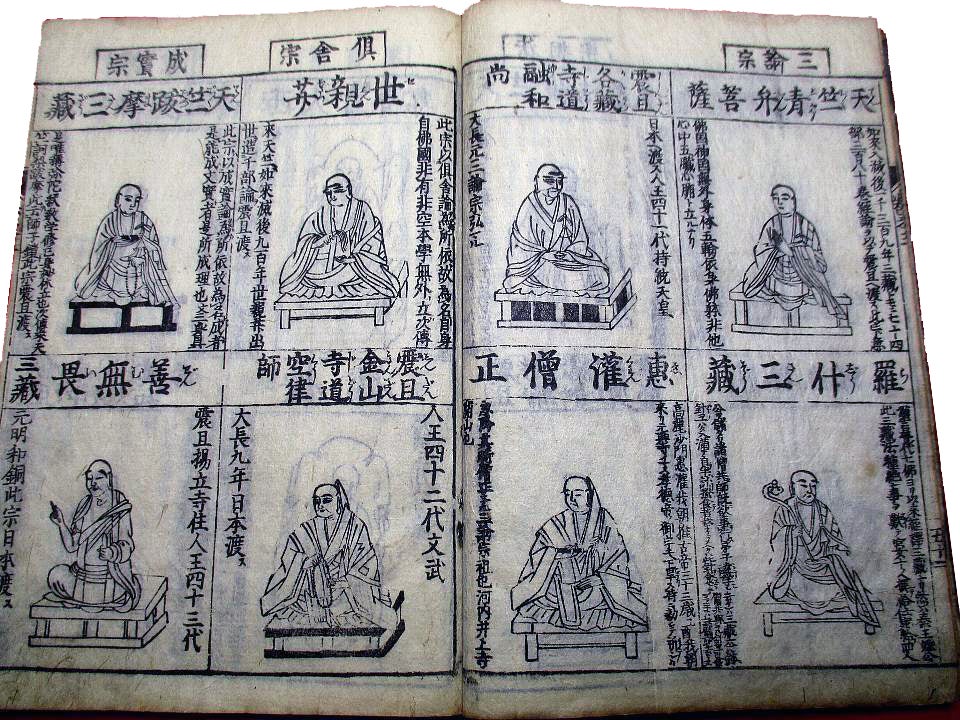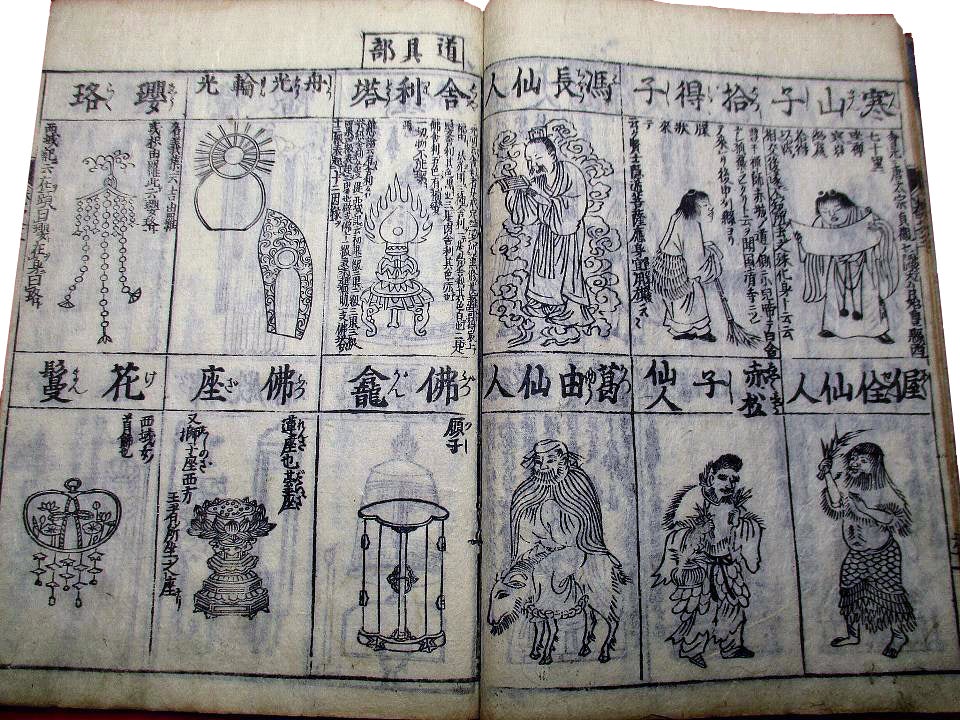
Butsuzō zui 仏像図彙(vol 4)
Author: Hidenibu Tosa
Date: 1690 (Genroku 元禄3)
23 x 15 cm, 50 pp. (all illustrated)
Coppola Collection
Using a carved woodblock to press out the pages of a book dates to about 650-700 CE, in the reproduction of Buddhist scripture.
Although the printing press emerged in the mid-1400s, pictographic languages were really not that suitable to moveable type (and lithography required a degree of industrialization), so using carved wooden blocks as the source of impressions was common for hundreds of years in Asian countries prior to industrialization (in Japan) and the introduction of photographic methods, both in the late 1800s.
Butsuzō-zui (仏像図彙), or Illustrated Compendium of Buddhist Images, was first published in 1690, and has since become a landmark Japanese dictionary of Buddhist iconography. The texts include hundreds of black-and-white drawings, with deities classified into categories based on function and attributes.
An expanded version was published in 1783.
Philipp Franz von Siebold (1796-1866) was the first modern scholar to introduce the Butsuzō zui to Europe and western audiences. He included images from the 1783 edition in his landmark Nippon Archiv zur Beschreibung von Japan(1831).
The text has remained a primary source on Japanese religious iconography for generations of scholars in the West, including Émile Guimet (1836-1918), the founder of the Paris-based museum Musée Guimet, and Louis Frédéric (1923-1996), who used it extensively in his Buddhism(Flammarion Iconographic Guides).


